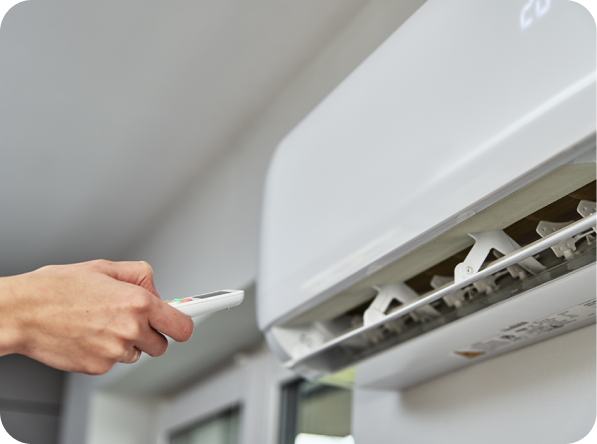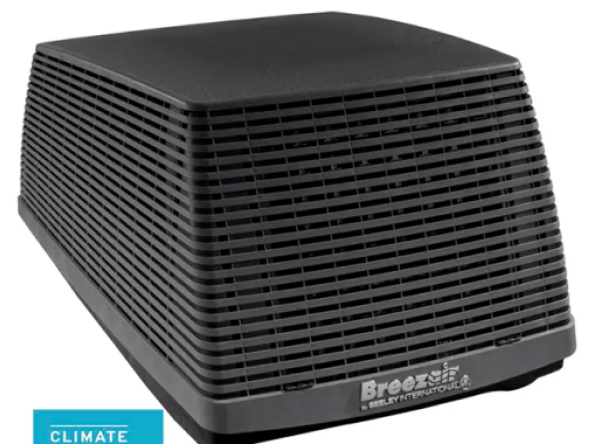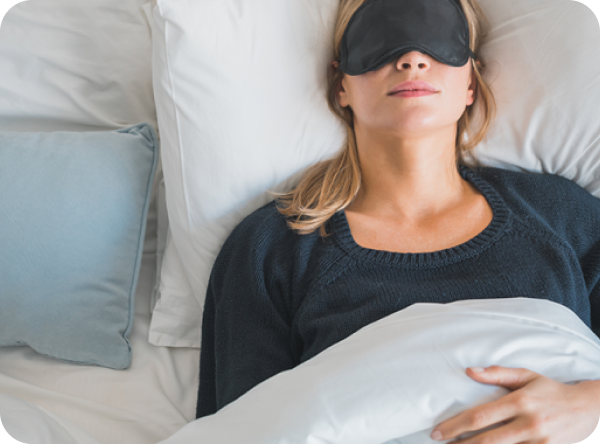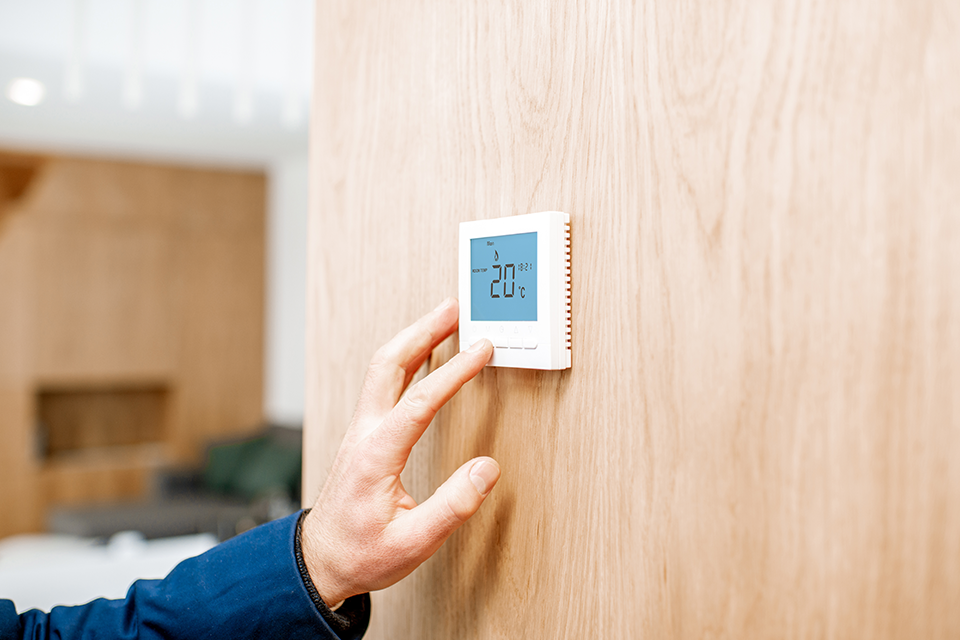
Most Energy-Efficient Split System Air Conditioner
March 23, 2023
Do Evaporative Coolers work in Melbourne?
August 31, 2023Best Temperature for Sleep

Although it varies from person to person, the optimal temperature for sleeping is 18.3 degrees celsius. To ensure the most comfortable sleep, doctors recommend a room temperature anywhere between 15.6 and 20 degrees celsius. There’s nothing better than having a good night’s sleep. It plays a vital role in our overall health and wellbeing, and temperature makes a big difference to our quality of sleep. In this article, we will explore how body & room temperature affects our sleep and the ideal temperature for a good night’s rest.
How Does Temperature Affect Sleep?
Temperature and sleep are, unsurprisingly, linked. For a second, think of the best night sleep you ever had – a morning you woke up feeling completely refreshed, rejuvenated and ready to attack the day. Now, was the scene you imagined a sweltering hot, sweaty night with a room fan whirring in the corner at full blast? Probably not. Maybe you imagined a freezing cold night, wrapped up in five layers of duvets and waking up with an icy cold nose? Unlikely. We instinctively know how important temperature is for getting a good night’s sleep, and below, we dive into the science behind our instincts.
Across the day, your body temperature will fluctuate as part of a process of thermoregulation. This influences our circadian rhythm or ‘body clock’, which keeps the body running smoothly. As part of thermoregulation, your body will naturally cool to prepare you for sleep, and while your temperature will fluctuate as you move between different phases of sleep, generally your body is cooler at night than in the day. This pattern of body temperature throughout the night is essential to having a quality, good night of sleep – and anything that impacts this process could leave you feeling tired for the entire following day.
So, what are these stages of sleep? It’s a little complicated, but there are two broad categories of sleep – NREM (Non Rapid Eye Movement) and REM (Rapid Eye Movement), and within NREM we have a further 3 categories; helpfully named NREM Stage 1, NREM Stage 2 and NREM Stage 3. As you progress through the stages of NREM, you move from falling asleep (Stage 1), light sleep (Stage 2) to a deep sleep (Stage 3). By stage 3, your body temperature has dropped, your breathing has slowed and your muscles are more relaxed.
REM follows deep sleep and is the phase where you experience your most vivid dreams. At this point your body temperature rises again. Interestingly, this cycle happens multiple times throughout a night – from anywhere between 4-6 times. Because the temperature of your body is intertwined with these different stages, any unnatural fluctuation of body temperature can essentially break up this cycle, quickly deteriorating the quality of your sleep.
As vital as this process is to our general health and wellbeing, it’s not something we can consciously control – unfortunately we can’t will ourselves warmer, colder or into different stages of sleep. We can, however, control external factors (the bedroom temperature) that can complement the natural process of our body and create an environment that encourages a great, healthy sleep. That’s not to say we should keep temperature down (or up) all night, we just need it in a comfortable range for some of the time – particularly to compliment our deep sleep.

What is the Ideal Temperature for Sleeping?
Most experts agree that the ideal room temperature for optimal sleep is about 18 degrees celsius for adults and can be slightly higher for babies at 18 to 21 degrees celsius. Keeping to this temperature range creates the perfect environment for sleep by working alongside the patterns of core body temperature. Being exposed to a sleep environment that is too warm can cause increased wakefulness and decrease the NREM (deep sleep) we all need to function. Humid heat can not only throw out our sleep stages but also affect thermoregulation, which is our body’s ability to regulate temperature. For both adults and babies, a cooler room temperature is considered not as detrimental to the sleeping routine as a hot bedroom. While you don’t want your room to be too cold, erring on the lower side of the spectrum is thought to promote a more comfortable sleep.
However, ideal sleep temperature can vary depending on personal preference and climate. Those of us who have shared a bed with a partner will know the impact of personal preferences all too well. One wants the fan on, the other wants a thicker duvet – usually a compromise is made to keep both happy! The difference in people’s individual preferences means that there may not be a bedroom temperature that will suit everyone. Some people “sleep hot” and need less blankets and a cooler room, while others “sleep cold” and prefer to be rugged up in a hotter room. So while the 18 degrees is agreed by experts, that may or may not be perfect for you as an individual.
Those who are used to living in warmer temperatures, for example countries closer to the equator, can acclimatise to a certain degree and may sleep reasonably in bedroom temperatures as hot as 28 degrees celsius. That would be unbearable for a person living in a colder climate, who have the same experience but in the opposite direction.
Ultimately, the ideal temperature will depend on your personal preferences and climate – but if you are stuck and wanting to try something new – start with setting the room temperature to 18 degrees celsius, a temperature agreed by most experts as ideal.
What is the Ideal Temperature for a Sleeping Baby?
While adults have a fully formed ‘body clock’ babies are not so lucky. Before 11 weeks old, babies do not have a fully functioning thermoregulatory system and therefore cannot maintain a consistent body temperature. This means they need external help such as air conditioning or clothing to help them maintain a comfortable sleeping body temperature. Ideally, we should maintain room temperature in a baby’s bedroom at between 18-20 degrees celsius.
The good news is, babies will gradually improve their ability to thermoregulate as they develop. By 11 weeks, babies can start to reach a minimum body core temperature of 36.4 degrees celsius within four hours of bedtime, similar to adults. Between 9-12 months, your baby should be able to fully adapt their body temperature to external conditions. Each baby is different so it is important to monitor your baby’s vital cues as to their temperature.
To help babies with their sleep cycle – they may need a couple of extra degrees when compared to adults. It is important to make sure your baby is sleeping in a comfortable temperature that is not too hot or too cold as they are more sensitive to changes in ambient temperature. For babies’ safety, it’s important to ensure they are not too hot as this increases the risk of SIDS, a syndrome that is largely associated with overheating. Babies don’t cope well with overheating as they sweat less than adults, which reduces their ability to cool down.
To ensure your baby is both safe and comfortable in hot weather, it is recommended to use approved sleepwear, avoid blankets and set a thermostat at the desirable temperature discussed. Clothing is your friend in this instance – it’s not required to leave the thermostat on all night if they are dressed appropriately for the room temperature – they should be comfortably warm, not hot or cold. To gauge if your baby is too hot, you can feel their tummy or back which should feel warm. If a baby feels too hot, remove some bedding or clothing.
While you don’t want a room to be too hot for a baby, it is also dangerous if it is too cold. Babies are susceptible to losing body heat because they have a greater ratio of exposed surface area to weight. Again, this is why correct sleepwear in cold weather is essential: babies usually benefit from an extra layer or blanket in cold weather, especially if it is a wearable blanket which is considered safer for the baby than a traditional blanket.
How to Keep Your Bedroom Cool at Night
Considering how important sleeping at the right temperature can be to health & wellbeing, it’s important to have your bedroom temperature & sleeping routine down pat. The best solution to keep your room cool at night is to use your air conditioner. This will help you have your bedroom temperature regulated at 15-20 degrees, as well as filter out any problematic allergens. You can automate this by programming your air conditioner’s thermostat to turn on around an hour before bed & then turn off at a specific time each evening, say midnight.
If you don’t have an air conditioning system in your home, you may try keeping your room cool through circulating the air – try opening windows & using a fan. This is less effective during heatwaves, however will keep your room around the right temperature on an average spring or summer evening.
Aside from keeping your room cool, having good sleep hygiene can assist with maintaining the appropriate body temperature to achieve your best shut eye. Sleep hygiene involves keeping optimal pre-sleep habits & environment. Below are some hygiene tips to consider, aside from keeping your room cool.
Additional Sleep Tips to Ensure a Good Night’s Rest
Regular Exercise
Exercise, particularly moderate aerobic exercise, has been shown to increase the amount of deep sleep we get. Sleep experts recommend exercising two to three hours before going to bed to give your body enough time to cool down for a comfortable sleep. It is important to note that if you exercise too close to bedtime this could have the opposite effect, as your body may release endorphins, raise core temperature & keep you awake.
Avoid Stimulants
Stimulants are a common cause of wakefulness and include everything from caffeine, tobacco and alcohol, to certain food groups, playing video games and using electronic devices. Stimulants are substances that increase the level of some chemical messengers in the central nervous system and result in more alertness and energy which is not conducive to sleep. If you are struggling with falling asleep, reducing or avoiding stimulants might be the answer.
Create a Soothing Routine & Stick to a Sleep Schedule
A relaxing & scheduled bedtime routine is essential. Such a routine may involve listening to calming music, reading (or listening) to a book and bathing before bed. You should also try to go to bed and wake up at the same time every day, (including weekends!), so your body can better regulate your sleep-wake cycle.
Minimise Distractions
Close your blinds and turn off lights to minimise distractions. Consider blackout curtains to minimize outdoor light entering your bedroom, and there are also insulative curtains that can reduce the heat entering your room from windows.
Nightwear
What you wear to sleep also makes a significant difference to your body temperature & ultimately quality of sleep. Wearing loose-fitting, lightweight clothing is a good idea, but pay attention to the fabrics used. Some fabrics like nylon, polyester, and flannel will trap body heat. On the other hand, sleepwear made of linen, bamboo, and cotton are great breathable nightwear options.
Select the Right Bedding
Unless your room is colder than 15 degrees, avoid heavy comforters, blankets, or sheets. Sleeping without covers, or using a very thin cotton sheet may be better for sweltering nights. This makes it possible for your body to dissipate more heat and stay at a more comfortable temperature.
Armed with knowledge of the best temperature for sleep and how to practice good sleep hygiene, you can prepare for your best rest. To avoid letting harsh hot or cold weather compromise your sleep, contact the air conditioning experts at SimplyAir for an air conditioning or thermostat solution to craft your optimal sleeping environment.
 Schedule a quote
Request a callback
Schedule a quote
Request a callback

Call us Mon-Fri: 8:30am-5pm or leave us a message for a callback.
